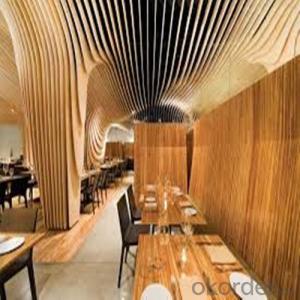Cabinet plywood is a versatile and essential material for creating custom cabinets that not only elevate the aesthetics of a space but also provide functionality and durability. It is a type of engineered wood that is made from multiple layers of wood veneers, which are glued together under heat and pressure. The layers are arranged in a cross-grain configuration, which gives the plywood its strength and stability. In this article, we will explore the various aspects of cabinet plywood, its benefits, and how it can be used to create stunning custom cabinets for your home or office.
The Composition of Cabinet Plywood
Cabinet plywood is composed of several layers of wood veneers that are stacked and glued together. The outer layers, known as the face and back veneers, are made from high-quality hardwoods such as oak, maple, cherry, or walnut. These hardwoods are chosen for their beauty, durability, and resistance to wear. The inner layers, known as the core, are typically made from softer woods like poplar or pine, which provide stability and reduce the overall cost of the plywood.
The layers are arranged in a cross-grain pattern, which means that the grain of each layer is perpendicular to the adjacent layers. This configuration provides several benefits, including increased strength, resistance to warping, and reduced shrinkage and expansion due to changes in humidity. The plywood is then bonded together using a strong adhesive, which is either a urea-formaldehyde, phenol-formaldehyde, or a soy-based adhesive, depending on the desired level of durability and environmental friendliness.
Why Choose Cabinet Plywood for Custom Cabinets?
There are several reasons why cabinet plywood is the preferred material for custom cabinets. First and foremost, it offers a high level of customization. You can choose the type of wood veneer for the face and back, the color and finish, and even the edge profile to create a unique look that matches your personal style and the overall design of your space.
Another advantage of cabinet plywood is its durability. The cross-grain construction of the plywood ensures that the cabinets will remain stable and resistant to warping, even in high-humidity environments. This makes it an ideal choice for kitchens and bathrooms, where moisture can be a concern. Additionally, the plywood is resistant to scratches and dents, ensuring that your cabinets will maintain their appearance over time.
Cabinet plywood is also cost-effective. While solid wood is more expensive and can be prone to warping and cracking, cabinet plywood offers a more affordable option that still provides the beauty and warmth of natural wood. The use of different wood veneers and the ability to customize the design further contribute to the cost savings.
The Process of Creating Custom Cabinets with Cabinet Plywood
Creating custom cabinets using cabinet plywood involves several steps, from design to installation. Here’s a brief overview of the process:
1. Design and Planning: The first step is to determine the layout and design of your custom cabinets. This includes the size, style, and functionality of the cabinets, as well as the materials and finishes you want to use.
2. Selection of Materials: Once the design is finalized, you can select the type of cabinet plywood you want to use. This includes choosing the wood veneer for the face and back, the core material, and the adhesive used for bonding the layers.
3. Cutting and Shaping: The cabinet plywood is then cut and shaped according to the design specifications. This may involve using specialized tools and equipment to ensure precision and accuracy.
4. Assembly: The individual pieces of the cabinet are assembled, with the use of screws, nails, or dowels to secure the parts together. The edges of the plywood may be routed or veneered to create a seamless and polished look.
5. Finishing: The final step in the process is to apply the desired finish to the cabinets. This can include staining, painting, or applying a clear coat to protect the wood and enhance its natural beauty.
6. Installation: Once the cabinets are complete, they are installed in their designated space. This may involve attaching them to the wall or floor and ensuring that they are level and secure.
The Role of Craftsmanship in Custom Cabinets
The quality of custom cabinets is heavily influenced by the craftsmanship involved in their creation. A skilled craftsman can bring your vision to life, ensuring that the cabinets are not only functional but also a work of art. Attention to detail is crucial, from the selection of materials to the fine finishing touches that make each cabinet unique.
The Importance of Maintenance and Care
While cabinet plywood is durable and low-maintenance, it is still important to take care of your custom cabinets to ensure their longevity. Regular cleaning, avoiding excessive moisture, and using appropriate cleaning products can help maintain the appearance and integrity of the cabinets.
Conclusion
Cabinet plywood is an exceptional material for creating custom cabinets that are both beautiful and functional. Its versatility, durability, and cost-effectiveness make it a popular choice among homeowners and professionals alike. By understanding the composition, benefits, and process of creating custom cabinets, you can make informed decisions and create a space that reflects your style and needs. So, embrace the journey of designing and crafting your custom cabinets with cabinet plywood, and enjoy the satisfaction of a well-crafted space that will serve you for years to come.

